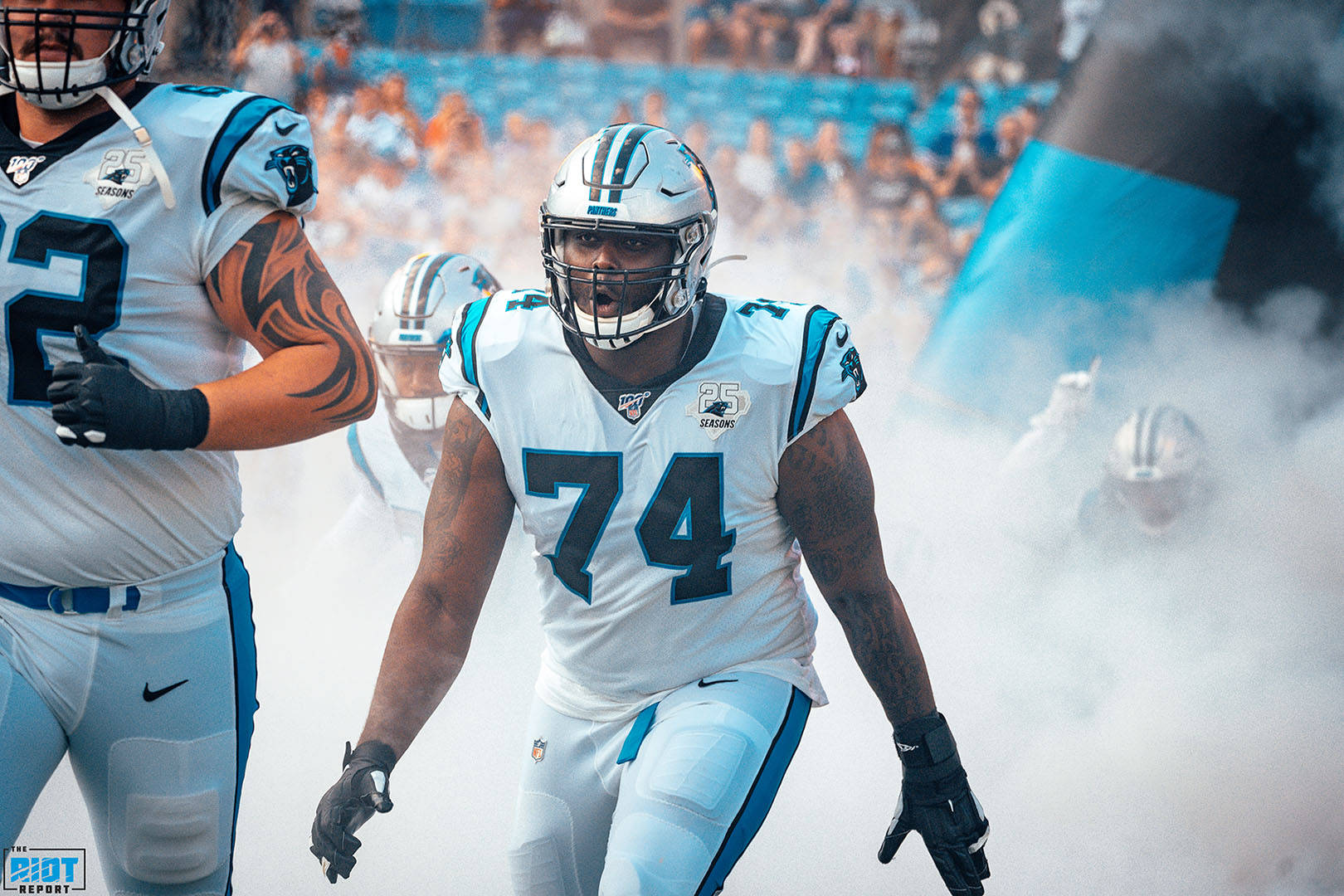While Greg Little’s time to win the starting left tackle job for Week 1 is quickly running out, everything suggests that the Panthers’ front office and coaching staff expect him to be the long-term but not necessarily the short-term answer at the position – Rivera called him “quality depth” after Tuesday’s practice, so it would appear that Daryl Williams will start Week 1. Therefore, while his play this preseason is unlikely to change how the offensive line looks against the Rams, it should not be assumed that he couldn’t push Williams as the season progresses and so evaluating his play at this stage and how he might improve is something that might become more and more relevant depending on how the season progresses.
We’ve already examined how the starters looked and went deep on the other backups, so how did Little get on against the Bills?
Running Game
The Panthers didn’t run the ball a ton against the Bills, as they spent almost the entire game trailing and, even in the preseason, they seemed more focused on giving the depth quarterbacks a thorough workout rather than putting more tread on the tires of the various running backs. However, there were still some plays where Little was asked to solo block in the run game, something that wasn’t really a feature of his game at Ole Miss – there was the usual combination of positive aspects and things to work on. One of the more encouraging aspects was his hand usage, as he showed good location to get consistent inside hand placement, allowing him to control the defender (Little wears #74):
However, as could be seen in both of the above plays, he could also do with combining this with improved knee bend, as he tends to play with quite straight legs as a run blocker – by raising his center of mass, it both limits the amount of power he is able to put through blocks and makes it easier for drive him off-balance, allowing the defender to shed the block or drive him backwards:
Another thing it would be nice to see, and which is something of a carry-over from his play as a pass blocker, is a greater understanding of how his block is meant to work as part of the play. An example of this is the following play, where knowing the run is going to go inside of him he should prioritize staying inside the defender, knowing that getting beaten around the edge isn’t an issue:
Here, he is able to make up for this with good hand placement up and under to get a hand to the frame of the defender, allowing him to wall him off from the play – but it would be best not to take such risks.
There were also flashes of just how valuable he could be as a run blocker, such as the following play where his combination of foot speed, hand usage and strength allow him to get outside the defender on the reach block while locating his hands inside the frame of the defender and allowing him to control the block:
This is really not an easy block to make, and while the defender is able to slow down the running back to let another defender make the play, a block like this would give a faster, more-nimble rusher such as McCaffrey a real chance to break a long play.
Little is still a work in progress as a run blocker, and his continuing to improve his knee bend in particular should be a focus going forward, but given the concerns about him in this regard from some analysts during the pre-draft process, he has so far shown himself to be a competent run blocker with the core traits to become a great one and, most encouragingly, he looks to be improving week to week.
Up Next: The Pass Blocking



